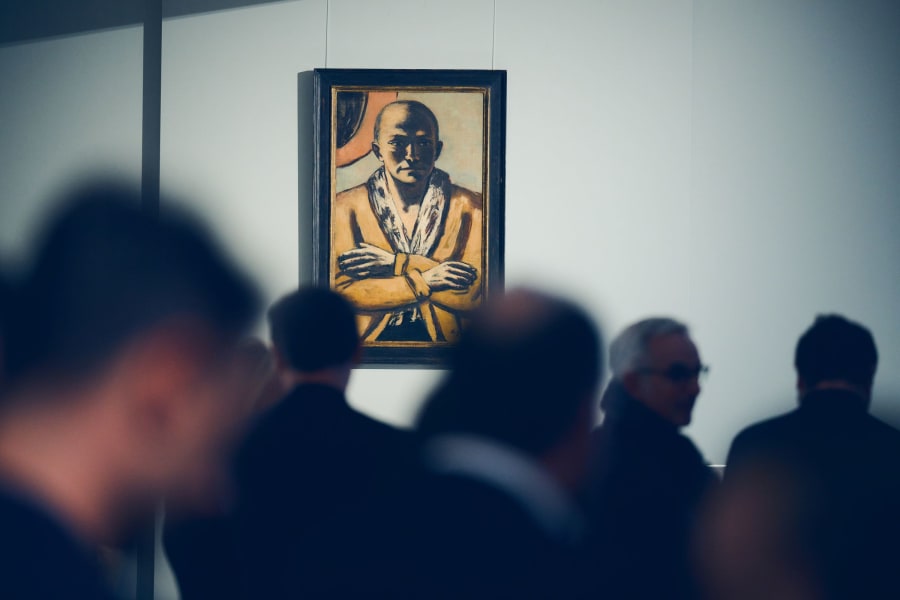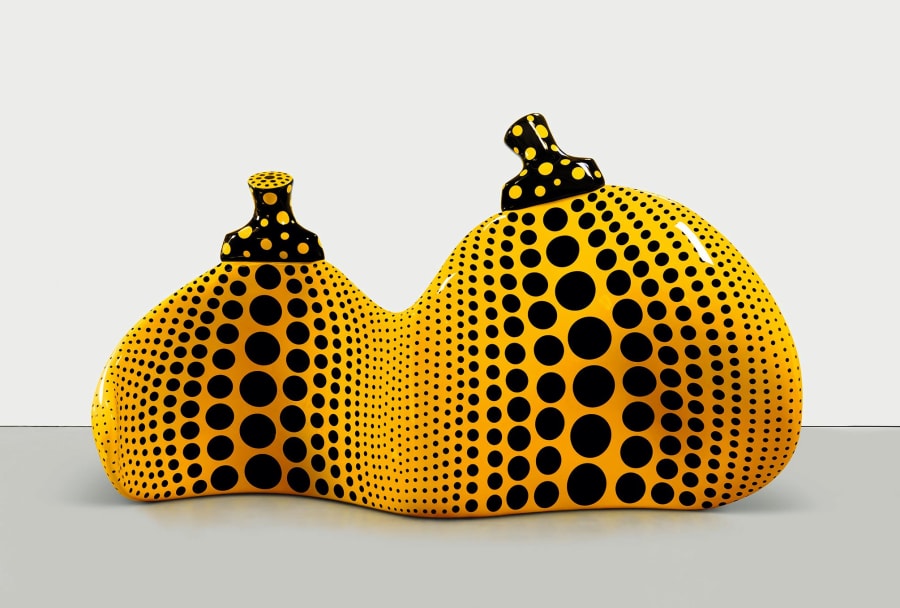In 1932, a Basel-born artist named Irène Zurkinden painted a portrait of the Surrealist star Meret Oppenheim, titled Meret à l’orange. It was but one of many times Zurkinden painted the legendary creator of Object (Le Déjeuner en fourrure) (1936) – known in English as Breakfast in Fur – who was, as it turns out, a dear friend. Zurkinden paints Oppenheim with a moody, knowing glare, dressed in a Napoleonic hat with green and black tassels and a chic pink coat. An ink-black boa wraps tightly around her neck. In Oppenheim’s right hand: a most covetable piece of citrus, clutched as if it were the whole world right there in her palm. Zurkinden would have been all of 23 when she made it, Oppenheim not even 20.
‘It’s so inventive, so innovative,’ says Eva Reifert, a curator at Kunstmuseum Basel, which has recently acquired and shown Zurkinden’s work. (The museum staged a retrospective in 1985, 2 years before she died.) ‘You can immediately see that Irène was into this dress and eccentricity.’
But who was Irène Zurkinden? While history has not forgotten Oppenheim, Zurkinden has not received the same level of sustained recognition. Recent gallery and institutional shows in Europe and the United States hope to correct this lapse and install Zurkinden in her rightful place among the top tier of 20th-century painters.
‘I think she truly is one of the greatest artists,’ says Meredith Rosen, whose gallery staged Zurkinden’s first show in the US last year and will present a selection of her works at Art Basel’s upcoming fair in Basel. Zurkinden was a gifted portraitist who could swing from commissions for well-to-do Swiss families to intimate depictions of women’s interiority. She took inspiration from Surrealism and Neo-Impressionism, but never adhered to any one school or movement. Zurkinden worked in a style all her own. ‘She was full of love and feeling and life, and that went into her art,’ Rosen says.
Zurkinden was born in 1909 in Basel. Her mother was a dance teacher, her father a customs agent. Her parents were supportive of her desire to become an artist, and at the age of 16 Zurkinden enrolled in art school in Basel, where it seems she first met Oppenheim. After receiving a grant, Zurkinden moved to Paris in 1929 to finish her studies under Arnold Fiechter and Henri de Toulouse-Lautrec at the Académie de la Grande Chaumière. She also convinced Oppenheim to join her in the French capital.
In Paris, Zurkinden embraced the liberated culture and took both men and women, including Oppenheim, as lovers. She was very much part of the avant-garde Montparnasse crowd. Man Ray photographed her in 1932, the same year she made Meret à l’orange. ‘She had a life of artistic and sexual freedom in Paris,’ says Rosen. It was in Paris, too, in 1934, that she met Kurt Fenster, a German Afro-Brazilian jazz musician with whom she had two children. She started to split her time between cities, balancing two contrasting sides of her life: family in Basel, and autonomy in Paris. Wherever she was, she continued to make art.
This confluence of two places with two different cultures no doubt influenced her work. ‘What’s intriguing to me is the almost unfinished quality of some passages in her paintings, where it’s a bit mysterious what she’s trying to show. But once you step back, it starts to make perfect sense,’ says Reifert.
A good example is L’ennuye mortel, la famme.... In this 1934 oil painting, an impasto-flecked woman, nude, stands in the foreground, with one leg propped up on a chair and her crotch proudly displayed. At the far right, set off in a separate interior space, is another figure, this time a headless female statue hoisted up in red high heels atop a plinth. In the background, what looks to be a battle processional ticks by. War was coming. Surrounding these details is a lot of empty space washed in shades of gray and white. Intriguing, mysterious, playful – just like the artist who made it.
In 1942, Zurkinden moved to Basel permanently and joined Gruppe 33, a Swiss anti-fascist collective of artists. She was one of only two women in the group. (The other, naturally, was Oppenheim.) She exhibited in the artist-led shows that Gruppe 33 mounted.
It was around this time that Zurkinden also started to paint more commissioned portraits of Basel’s wealthier residents. Those were often executed in a more controlled, realist style, with a mix of bright and earthy colors – her signature palette. But Zurkinden’s nude paintings and drawings are her most compelling work. They are figures of strength, power, and sensuality. Even when not in the city, Paris’s influence on Zurkinden is evident in the loose, unstructured ease with which she creates.
For both her portraits and nudes, it is not always clear who her subjects are. She made self-portraits, and paintings of Oppenheim, Fenster, and various patrons. But plenty remain mysterious. Recently, the Kunstmuseum acquired a painting called Jazzmusiker in Paris, from 1935. The subject, a Black man, was originally thought to be Fenster, ‘but then we found a sort of designation on the back, saying “Jacky,” so now it’s likely somebody that we cannot yet identify,’ says Reifert. More research is currently underway.
Zurkinden also created costumes and set pieces for the theater and made book illustrations throughout her lifetime. She traveled extensively, including to Spain and Morocco. She loved the circus, and some of her drawings include a Surrealist-tinged whimsy that feels like you are under the red-striped tent along with her. ‘You can really see into her heart,’ says Rosen of these enchanting works on paper.
With such an intriguing story and compelling body of work, why do we not know more about Irène Zurkinden? ‘I think hers is just one of these stories where she’s constantly overshadowed by her more famous friend, Oppenheim,’ says Reifert. ‘We’ve heard the story so often that somebody is overshadowed by men. But in this case, it’s just that you have this local art history that has this one hero that made it to the international stage.’ By now, surely there is room for more than one intrepid woman from Basel.
‘It’s wonderful to see her now recognized,’ Reifert says.
Meredith Rosen Gallery will present work by Irène Zurkinden in Art Basel in Basel's Feature sector.
Art Basel in Basel takes place from June 13-16, 2024. Find out more here.
Grace Edquist is an art writer and the copy director of Vogue magazine. She lives in New York City.
Caption for top image: Irène Zurkinden, Lila Breton (detail), 1936. Courtesy of Meredith Rosen Gallery and the Estate of Irène Zurkinden.


